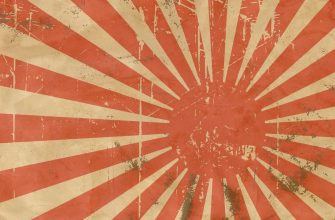Famous Big and Small Cities of Russia (топик на английском)
Famous Big and Small Cities of Russia
Like any other large country, Russia has many big and small cities and towns. All in all there are 157,895 residential places in the country and each of them has historic past and inter¬esting sights. I would like to tell you about some of them.
Saratov
Saratov is a major city situated in southern Russia, founded in 1590 as a fortress to protect the southern borders of Russia. The city lies on the right bank of the Volga River and stretches along it for 34 km. Saratov is a great industrial, cultural and educational centre.
The city is a well-known Russian centre of higher education and research activities. Saratov State University is one of the oldest universities in Russia. There are more than a dozen other universities in Saratov too.
The population of Saratov is more than eight hundred people. Saratov has a lot of places of interest: Saratov Bridge, the Embankment of Cosmonauts on which you can see Rotunda and Lovers Monument, Kirov Avenue and many others.
The recreational park is one of the favorite places among the residents. The main attraction is an oak grove and a cascade of old ponds.
There are a lot of different theatres in Saratov. The Opera and Ballet House is one of the oldest theatres in Russia. Saratov Academic Theatre for Young Spectators is the first professional children’s theatre opened in 1918.
Saratov State Conservatory is situated in the centre of the city. It was opened in 1912 and became the third high musical school in the country.
The Radishchev Art Gallery is a museum in Saratov opened in 1885. It used to be the first public art museum in the Russian provinces.
Murmansk
Murmansk is the largest city in the world beyond the Polar Circle. The climate of the city is mild because of the Gulf Stream. The Polar day» lasts from May 23 until July 21 in the city. From December 1 to January 13 the Polar night descends on to Murmansk.
Murmansk was officially founded on October 4, 1916 and used to be a small settlement called Romanov-on Murman.
Murmansk is a large centre of the fishing industry. A new port has been built in the southern part in the Gulf of Kola. Its deep-water docks are up-to-date with the newest equipment.
Murmansk has plenty of entertainments, the traditional Festival of the North, for example which includes reindeer races, skating and skiing competitions. Murmansk has three professional theatres and a few cinemas. In the Local History Museum visitors can learn interesting things about the flora and fauna of the Arctic region and the history of the Kola Peninsula.
Tyumen
Tyumen is the oldest Russian settlement in Siberia founded in the 16th century to support Russia’s eastward expansion. The city has remained one of the most important industrial and economic centers to the east of the Urals.
Tyumen has a range of entertainments for all ages. Tyumen has had its own Drama and Comedy Theatre since 1858. There is a professional Puppet Show and the Youth Theatre. The Tyumen Music Hall is one of the most common places for tours of Russian and world class music stars. The Tyumen Circus is the most modern circus in Siberia and is considered one of the best in Russia. Tyumen offers a great variety of cuisine in its numerous restaurants and bars. There are some annual events taking place in the town such as the Student Spring Music Show and Town Day Show. There are also many cinemas including two with high class stereo systems, and clubs.
There are numerous museums and art galleries in Tyumen. The most famous are the Tyumen Museum of Local Lore and the Tyumen Fine Arts Gallery.
Yaroslavl
Yaroslavl is an ancient city founded in 1010 by Prince Yaroslav the Wise. The city is situated to the north of Moscow on the Volga River. The legend says that once Prince Yaroslav and his warriors came to the place where the Kotorosl River flowed into the Volga, and decided to found a city there. The local pagans didn’t like that invasion and sent their sacred bear to kill the Prince, but Yaroslav killed the animal with his pole axe. Then he founded the fortress and it called it Yaroslavl. Because of this legend, the coat of arms of the city is a bear carrying a pole axe on its shoulder.
The city’s historic past is rich: it saw the Tatar invasion, the Polish intervention; it was damaged heavily during the Revolution. But in spite of all these difficult periods Yaroslavl has remained magnificently beautiful.
Yaroslavl belongs to the Golden Ring of Russia. Every day crowds of tourists come to this city and admire its wonderful cathedrals, monasteries and churches.
The city is also famous for the first Russian theatre, the Volkov Theatre, which was built by Fyodor Volkov in 1750.
Yaroslavl is a big industrial city with big plants and factories that produce engines, paints, oil, tires and synthetic rubber.
The first woman cosmonaut, Valentina Tereshkova, was born in Yaroslavl.
In 2005, the historic centre of Yaroslavl was included on the list of UNESCO World Heritage Sites. In 2010, Yaroslavl celebrated its 1000th birthday.
ПЛАН-ОТВЕТ. FAMOUS BIG AND SMALL CITIES OF RUSSIA
1. Вступление (Like any other large country, Russia has many big and small cities and towns. All in all there are 157,895 residential places in the country and each of them has its. historic past and interesting places. I would like to tell you about some of them.).
2. Рассказать кратко о любых российских городах или своём любимом городе по следующей схеме: name position historic facts places of interest interesting facts.
QUESTIONS
1. What Russian cities and towns do you know?
2. What is your hometown and where is it situated?
3. What interesting places are there in your hometown?
4. Do you prefer travelling across Russia or abroad? Why?
5. What Russian cities would you like to visit and why?
6. What Russian cities and towns have you visited?
7. What were your impressions?
8. Have you ever been to one of the cities mentioned above (Saratov, Murmansk, Tyumen or Yaroslavl)?
9. What do you know about each of these cities now?
О городах России на английском языке
О городах России на английском языке.
Arkhangelsk was the chief Russian seaport from its founding (1584) as Novo-Kholmogory until the building of the Baltic port of Saint Petersburg in 1703. It received its present name in 1613. The city declined in the 18th century, but trade revived at the end of the 19th century, when a railroad to Moscow was completed. During World Wars I and II Arkhangelsk was a major port of entry for Allied aid. The city resisted Bolshevik rule during 1918-20 and was a stronghold of the White Army, supported by Allied forces.
Irkutsk was founded in 1652 as a cossack outpost and developed as a fur- and gold-trading center on the route to Mongolia and China; it was also used by the Russian government as a place of exile. Industrialization accelerated after the coming of the Trans-Siberian Railroad in 1898.
The city, founded in 1255 as a fortress by the Teutonic Knights, became a member of the Hanseatic League in 1340. From 1457 to 1525 it was the official seat of the grand master of the Teutonic Knights, and from 1525 to (1618) it was the residence of the dukes of Prussia. Frederick I was crowned as the first king of Prussia in the chapel of the Schloss in 1701. During World War I (1914-18) the city was the scene of heavy fighting between the Germans and the Russians. Following the war it was made the capital of the German province of East Prussia. The city was severely damaged in World War II (1945-45), and in 1945, after a two-month siege, it was occupied by Soviet troops. By agreement among the Allies at the Potsdam Conference (1945) the Union of Soviet Socialist Republics (USSR) annexed the city and surrounding territory. In 1946 the city’s name was changed from Kцnigsberg to Kaliningrad, in honor of the Soviet leader M. I. Kalinin.
Kazan was founded in the late 14th century and soon became the capital of a powerful Tatar khanate. In 1552 the city was annexed by Russia under Ivan IV Vasilyevich. It was largely destroyed in 1774 during a revolt by troops under the leadership of the cossack soldier Yemelyan Pugachov, but was rebuilt soon thereafter, during the reign of Catherine the Great.
Murmansk was founded in 1915, during World War I, as a port of entry for Allied supplies after Russian ports on the Black and Baltic seas had been closed. In 1916 it was linked by rail with Petrograd (now Saint Petersburg). After the Russian Revolution, an Allied force briefly occupied Murmansk, and it was an Allied port of entry in World War II (1939-45).
During the time of the Union of Soviet Socialist Republics (USSR), Soviet central planners concentrated resources in several cities, including Nizhnevartovsk and Surgut, to promote the growth of the Siberian oil industry. The labor intensive nature of oil production during the Soviet period spurred dramatic population growth in the city. In 1970, prior to the birth of the industry, the population of the city was only 16,000. By the end of the decade the city had grown to 109,000, and by the end of the 1980s the city had again more than doubled, to 242,000. By 1979 the city had grown to more than three times the size Soviet planners had expected, causing serious housing and infrastructure shortages. The population of the city is currently declining, most likely due to economic difficulties in the oil industry.
One of the oldest cities in Russia, Novgorod was founded as early as the 5th or 6th century. Rurik, founder of the Russian monarchy, became prince of Novgorod in 862. In 1136 the city achieved independence from Kyyiv (Kiev) and, with a democratic form of government, became the capital of sovereign Great Novgorod. In the 13th and 14th centuries, Novgorod flourished as a trade outpost of the Hanseatic League and was a major cultural center. It repulsed Tatar invasions in the late 13th century. In 1478 the city was annexed by its rival, Moscow, under Ivan III. The city declined as a trading center after the establishment of nearby Saint Petersburg in 1703. During the German occupation (1941-44) of World War II, the city was severely damaged.
In 1749 a customs office was established on the site of present-day Rostov-na-Donu. A fortress was built here in 1761, and in 1797 the settlement achieved city status. In the 19th century it grew as an important trading port. During World War II the city was held twice (1941, 1942-1943) by German forces and was damaged considerably.
Volgograd was founded in 1589 as Tsaritsyn, a fortress on the southeastern frontier of Russia. It was taken by cossack rebels twice: in 1670 by Stenka Razin and in 1774 by Yemelyan Pugachov. With the expansion of the Russian Empire in the 19th century, Tsaritsyn became an important port for products shipped down the Volga River. Early in the Russian Revolution, in 1917, the city was taken by the Bolsheviks. During the civil war that followed it was occupied by White Russian troops for three months in 1919. In 1925 the city was renamed Stalingrad, for Joseph Stalin, who had been notable in the defense of the city against the White Russians.
During World War II, Stalingrad, a strategically located industrial center, was a vital German objective. A large German force mounted an assault on the city on August 20, 1942, after a period of heavy air raids. A successful Soviet counteroffensive began on November 19, and on February 2, 1943, the Sixth German Army surrendered, thus ending the German advance into the Union of Soviet Socialist Republics (USSR). German casualties alone totaled more than 300,000, and the Soviet city was almost completely destroyed. Reconstruction began immediately after the war. The city was renamed Volgograd in 1961.
According to tradition, Yaroslavl was founded in the early 11th century by Russian ruler Yaroslav the Wise of Kyyiv. From 1218 to 1463, when it was absorbed by Moscow, Yaroslavl was the seat of an independent principality. In the 16th and 17th centuries it was an important commercial city on the route between Moscow and Arkhangelsk. Commerce declined in the 18th century, and the city became known for the manufacture of textiles. After the Russian Revolution of 1917, Yaroslavl was developed as a center of heavy industry.
The city was founded in 1721 by Czar Peter I as an ironworking center and was named Yekaterinburg for his wife, who was later proclaimed Empress Catherine I. Industrial development was spurred by the construction of the Great Siberian Highway in the late 18th century and the Trans-Siberian Railroad in the late 19th century. Czar Nicholas II and his family were held captive in the city by the Bolsheviks after the Russian Revolution and were executed here in 1918. The city was renamed Sverdlovsk in 1924 in honor of Bolshevik and Soviet leader Yakov M. Sverdlov. During World War II (1939-1945) industry from threatened European areas of the Union of Soviet Socialist Republics (USSR) was transferred here. Following the disintegration of the USSR at the end of 1991, the city’s name was changed back to Yekaterinburg.
Сочинения о Москве на английском языке с переводом на русский язык
Представлена подборка сочинений о Москве на английском языке с переводом на русский язык.
| Moscow Is The Capital of Our Country | Москва — столица нашей родины |
| Читать полностью>>> | |
| Places of Interest in Moscow | Достопримечательности Москвы |
| Читать полностью>>> | |
| Moscow 100 Years Ago | Москва 100 лет назад |
| Читать полностью>>> | |
| My Favorite Place in Moscow | Моё любимое место в Москве |
| Читать полностью>>> | |
| The Tretyakov Gallery | Третьяковская галерея |
| Читать полностью>>> | |
| The Moscow Metro | Московский метрополитен |









